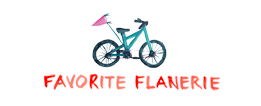Today is Little Drummer Boy’s first day of “big school” kindergarten. We’ve been anticipating it and talking about it all summer, and the big day finally arrived. It’s really just one more episode in a thousand new things LDB has been experiencing. When you are young, change seems so much more acceptable for some reason. Perhaps it’s because so many monumental changes in size and communication skills and motor skills are compacted into those first few years, that it really becomes “old hat.” It’s no wonder we seem ready to slow the process as we get older.

Little Drummer Boy was raring to go, all dressed up in his yellow and khaki school uniform and boasting a Bumblebee Transformer backpack–no doubt all he needs to face the big world today. The most energizing factor about the backpack seemed to be the fact that it lights up when he moves. LDB was intent on making sure the lights would show up in all our “first day of school” photo opportunities. I guess something about the red blinking lights amped up the “cool” factor. It’s hard to squelch the light. A realization I’m enjoying at the moment.
The start of school always seems symbolically to represent the ending of summer for me, despite the reality that we’ll likely have at least two or three more months of summertime temperatures in Mississippi. Beyond that, this start of school for Little Drummer Boy seems to represent the ending of his “baby-hood” and his launch into full-fledged “boy-dom.” And although I often tell him “you’ll always be my baby,” there’s no turning back now. Yes, he was raring to go. And, I have to admit that I couldn’t help but want to hold the reigns a little tighter.
In the excitement of heading down the sidewalk toward Sudduth Elementary this morning, LDB stumbled and fell while holding my hand. My heart sank for a moment — a moment ripe with emotions and memories and hopes and a twinge of worry. Will he cry? Will a fall overshadow the fun of the morning? Will this squelch his excitement for the day and this new experience? Little Drummer Boy’s response was to stand up without a flinch and say, “I’m ok. I love you Mommy.” It’s hard to squelch the light.
Earlier this week, the latest American Life in Poetry installment graced my inBox. The featured poem, Fireflies, couldn’t be more appropriate in my mind at the moment. “Lightening bugs,” as we call them around here, are the hallmark of Summertime and catching them is a typical joy for almost any “boydom” or “girlhood.” Little Drummer Boy and Bug have had their share of experiencing the chase and the wonder of these little incandescent creatures. Baby Girl hasn’t had the pleasure yet, but I’m sure she’ll enjoy the experience with her own flair in due time. Even as a grown-up, I can clearly remember that there is nothing quite as giggle-inducing or excitement-sparking as capturing the fly in two hands, peeking into the dark space to glimpse the light and then opening your fingers wide to see him fly away spreading his light into the night sky. That moment is beautifully described in this poem, and it reminded me… There’s nothing quite as exciting as holding their light and letting it go for the rest of the sky to experience.
Last Summer after one of the boys’ excursions in pursuit of fireflies, I recorded one of my favorite Little Drummer Boy quotes. I’ve shared it before, but I was thinking of it this morning. They bustled back into the house all sweaty and filled laughter. They had caught two lighting bugs. And in their inspection, LDB announced that one of them “COULD NOT turn his light off.” If there is any one thing I can hope for Little Drummer Boy as he embarks on this year’s new experiences it is that he CAN NOT turn his light off. It’s a brilliant light that deserves to fly.
American Life in Poetry: Column 280
BY TED KOOSER, U.S. POET LAUREATE, 2004-2006
Marilyn Kallet lives and teaches in Tennessee. Over the years I have read many poems about fireflies, but of all of them hers seems to offer the most and dearest peace.
Fireflies
In the dry summer field at nightfall,
fireflies rise like sparks.
Imagine the presence of ghosts
flickering, the ghosts of young friends,
your father nearest in the distance.
This time they carry no sorrow,
no remorse, their presence is so light.
Childhood comes to you,
memories of your street in lamplight,
holding those last moments before bed,
capturing lightning-bugs,
with a blossom of the hand
letting them go. Lightness returns,
an airy motion over the ground
you remember from Ring Around the Rosie.
If you stay, the fireflies become fireflies
again, not part of your stories,
as unaware of you as sleep, being
beautiful and quiet all around you.
American Life in Poetry is made possible by The Poetry Foundation, publisher of Poetry magazine. It is also supported by the Department of English at the University of Nebraska-Lincoln. Poem copyright ©2009 by Marilyn Kallet, from her most recent book of poetry, Packing Light: New and Selected Poems, Black Widow Press, 2009. Reprinted by permission of Marilyn Kallet. The introduction’s author, Ted Kooser, served as United States Poet Laureate Consultant in Poetry to the Library of Congress from 2004-2006. We do not accept unsolicited manuscripts.








 Hello & welcome! I’m Haley Montgomery, and I’m the designer and owner of
Hello & welcome! I’m Haley Montgomery, and I’m the designer and owner of 















